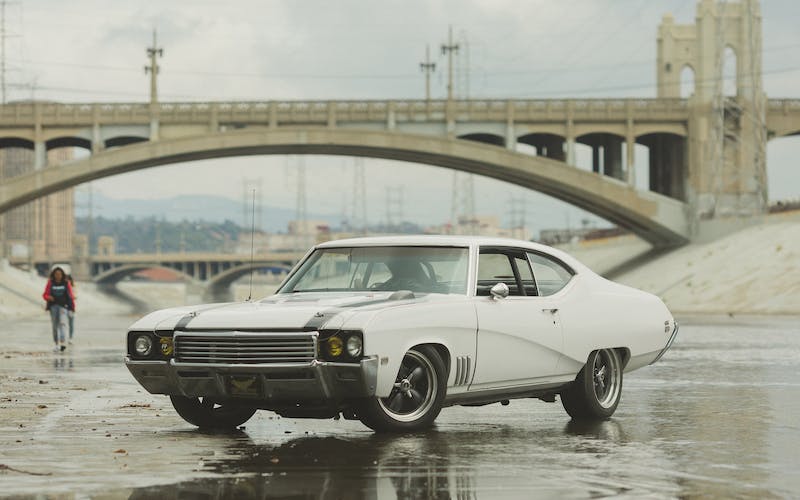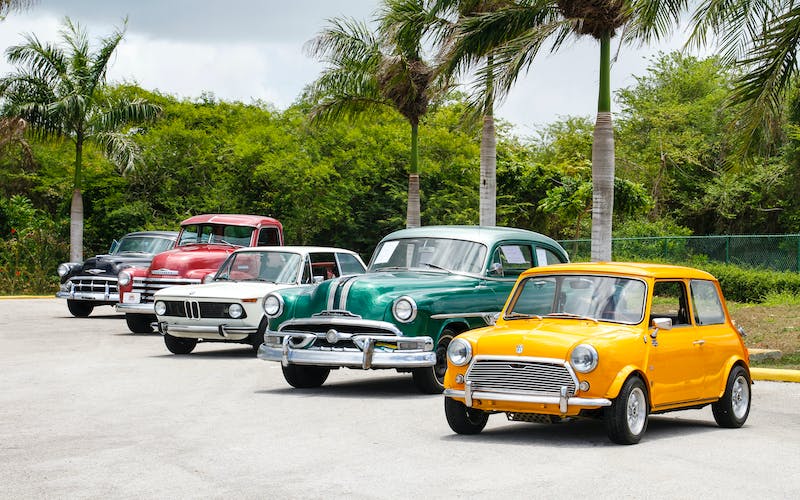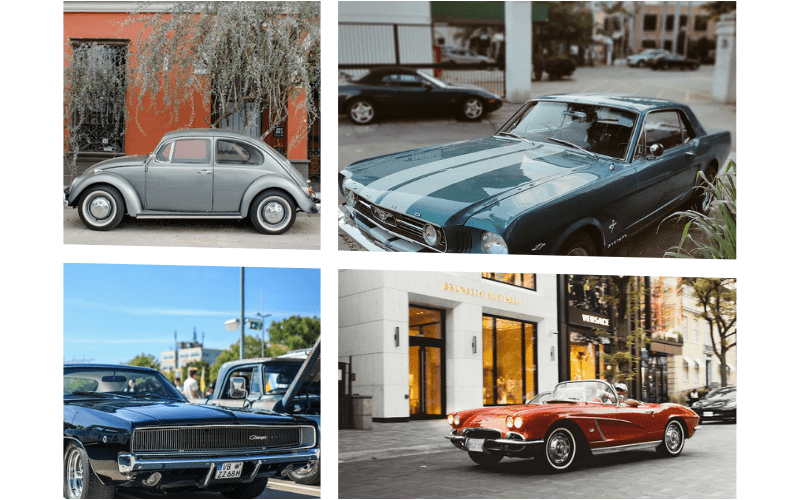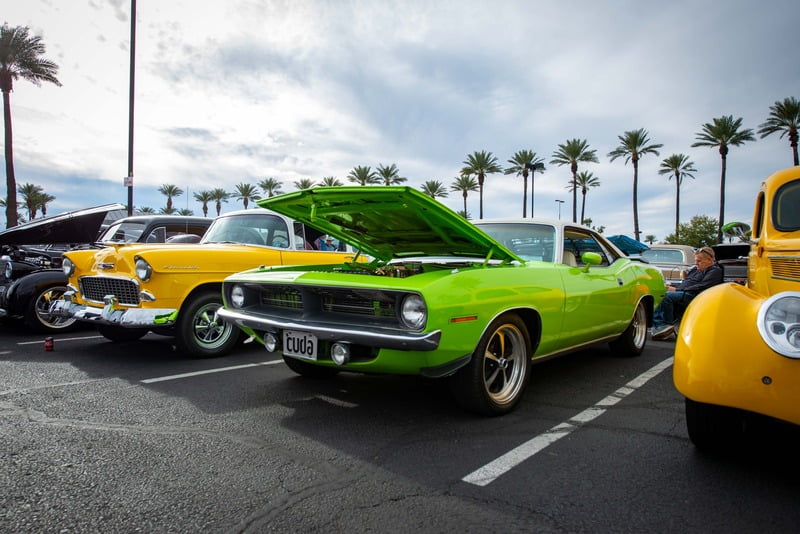
TABLE OF CONTENT
INTRODUCTION
Embarking on a journey through the world of classic cars is like stepping into a living museum of automotive history and timeless design. In this blog post, we invite you to explore the captivating realm of classic cars, where the term “classic” goes beyond age, encapsulating a unique blend of craftsmanship, heritage, and sheer driving allure.
Whether you’re a seasoned enthusiast or just discovering the fascination of vintage automobiles, join us as we cruise through the defining features, traverse the winding roads of their rich history, roll up our sleeves to understand the art of restoration, and even explore the intriguing realm of classic car investment. Get ready to rev your engines and navigate the road of elegance, as we dive into the world of Classic Cars.
UNDERSTANDING CLASSIC CARS
Classic cars evoke a sense of nostalgia, capturing the essence of automotive history and design. To truly appreciate these timeless treasures, it’s essential to understand what sets them apart.

Definition And Criteria
Classic cars are not merely old vehicles; they possess distinctive characteristics that make them stand out. Typically, a car is considered a classic if it meets certain criteria:
- Age: Generally, a classic car is at least 20 years old. However, specific definitions may vary.
- Design and Styling: Classic cars often showcase unique design elements and styling that reflect the trends of the era in which they were produced. These features contribute to their aesthetic appeal.
- Historical Significance: Some classic cars gain recognition for their historical importance, whether due to technological innovations, cultural impact, or association with significant events.
Popular Classic Car Models
Delve into the world of classic cars, and you’ll encounter a plethora of iconic models that have left an indelible mark on automotive history. Here are a few noteworthy examples:
- Ford Mustang (1964-1973): A symbol of the American muscle car era, the Mustang revolutionized the automotive industry with its sporty design and powerful performance.
- Volkswagen Beetle (1938-2003): The Beetle’s distinct rounded shape and affordable price made it a cultural icon, especially during the 1960s.
- Chevrolet Corvette (1953-present): Known for its sleek and aerodynamic design, the Corvette remains a symbol of American sports cars.

Understanding classic cars involves appreciating their age, design, and historical context. By visually showcasing these elements, your readers can develop a deeper appreciation for the timeless allure of classic automobiles.
THE HISTORY OF CLASSIC CARS
Delving into the rich tapestry of classic cars unveils a captivating journey through automotive history. Understanding their evolution provides insight into the cultural and technological milestones that have shaped these beloved vehicles.
Evolution of Classic Cars
Classic cars have traversed a fascinating path, evolving alongside advancements in technology, design, and societal shifts. Here’s a brief overview:
- Early 20th Century (1900-1930s): The automotive industry was in its infancy, marked by handcrafted vehicles with wooden frames and spoked wheels. The Ford Model T, produced from 1908 to 1927, exemplifies this era, symbolizing the advent of mass production.
- Golden Age (1940s-1950s): Post-World War II, the automotive landscape witnessed a surge in creativity. Cars featured bold designs, extravagant tailfins, and powerful V8 engines. This era introduced classics like the Cadillac Eldorado and Chevrolet Bel Air.
- Muscle Car Era (1960s-1970s): Characterized by high-performance engines and a focus on speed, muscle cars like the Ford Mustang and Chevrolet Camaro gained prominence. This era exemplifies the marriage of style and power.
- Modern Classics (1980s-Present): Some cars from more recent decades have already earned classic status. The Porsche 911 and the Mazda MX-5 are modern examples that have become iconic in their own right.
Cultural Impact
Classic cars aren’t just modes of transportation; they’re cultural icons that have left an indelible mark on society. Here’s a glimpse into their cultural impact:
- Movies and Television: Classic cars often take center stage in movies and TV shows, becoming symbols of style and sophistication. Think of the iconic DeLorean in “Back to the Future” or the Ford Mustang in “Bullitt.”
- Music: Certain classic cars have inspired songs and become synonymous with specific genres. The Beach Boys’ “Little Deuce Coupe” pays homage to the 1932 Ford Coupe, showcasing the intersection of music and automotive culture.
The history of classic cars is a vibrant tapestry woven with technological innovation, design evolution, and cultural resonance. By presenting this narrative with visually engaging elements, your readers can embark on a captivating journey through the annals of automotive history.
RESTORING AND MAINTAINING CLASSIC CARS
Restoring and maintaining classic cars is a labour of love, preserving the charm and authenticity of these timeless vehicles. Whether you’re a seasoned enthusiast or a newcomer to the classic car scene, understanding the challenges and best practices is essential.
Challenges of Restoration
Restoring a classic car involves more than just a fresh coat of paint. Here are some challenges enthusiasts commonly face:
- Sourcing Parts: Finding original or compatible parts for older models can be a treasure hunt. Specialized suppliers and online communities often become invaluable resources.
- Rust and Corrosion: Classic cars, especially those exposed to the elements, may suffer from rust and corrosion. Addressing these issues requires meticulous care and sometimes, skilled welding.
- Mechanical Expertise: Vintage engines and systems may differ significantly from contemporary counterparts. Restorers often need a deep understanding of older mechanical systems.
Maintenance Tips
Proper maintenance of a classic car is crucial for preserving a classic car’s beauty and functionality. Here are some essential tips:
- Regular Inspection: Schedule routine inspections to catch issues early. Check for leaks, unusual sounds, and signs of wear.
- Proper Storage: Protect classic cars from the elements by storing them in a garage or covered space. This helps prevent rust and sun damage.
- Use the Right Products: Classic cars often have specific care requirements. Use products designed for vintage vehicles to avoid damage to delicate surfaces.

Restoring and maintaining classic cars is an art that requires patience, expertise, and a genuine passion for preserving automotive history. By visually showcasing the restoration process and maintenance rituals, readers can gain a deeper appreciation for the dedication involved in keeping classic cars on the road.
INVESTING IN CLASSIC CARS
Beyond their aesthetic appeal and historical significance, classic cars have emerged as intriguing investment opportunities. For those considering entering the world of classic car investment, understanding the dynamics and potential returns is crucial.
Appreciation and Depreciation
Classic cars, under the right circumstances, can appreciate over time. Here’s why:
- Scarcity: As years pass, the number of well-maintained classic cars decreases, contributing to their scarcity and, consequently, their value.
- Historical Significance: Cars associated with particular historical events or figures often become sought-after collectibles, driving up their market value.
However, it’s essential to acknowledge the potential for depreciation, especially if the car requires extensive restoration or if market trends shift. Include images of classic cars that have experienced notable appreciation, emphasizing their current market value.
Tips for Potential Buyers
For those considering classic cars as an investment, here are some practical tips:
- Research Extensively: Understand the market trends, historical significance, and potential for appreciation of the specific classic car you’re interested in.
- Condition Matters: A well-maintained, original classic car often holds more value than one that has undergone extensive modifications.
- Documentation: Ensure the car comes with proper documentation, including maintenance records and historical background, as this can significantly impact its value.
Investing in classic cars is a blend of passion and financial foresight. By providing insights into appreciation, depreciation, and practical tips for potential buyers, your readers can navigate the classic car investment landscape with a clearer understanding of the potential risks and rewards.
CLASSIC CAR EVENTS AND COMMUNITIES
Classic car enthusiasts don’t just admire these timeless vehicles from afar; they actively participate in events and engage with vibrant communities dedicated to preserving and celebrating automotive history.
Major Classic Car Events
Around the world, various events bring together classic car aficionados to showcase their prized possessions. Here are some major classic car events that enthusiasts eagerly anticipate:
- Pebble Beach Concours d’Elegance: Held annually in California, this prestigious event attracts the most exquisite classic cars, showcasing elegance and automotive artistry.
- Goodwood Revival: Taking place in the UK, the Goodwood Revival is a step back in time, recreating the atmosphere of a bygone era with vintage fashion and, of course, classic cars.

Online Communities
In the digital age, classic car enthusiasts unite in online communities to share their passion, knowledge, and experiences. Here are a few notable platforms:
- Hemmings Forums: A well-established online community where enthusiasts discuss everything from restoration tips to upcoming events.
- Reddit Classic Cars: The Classic Cars subreddit provides a space for enthusiasts to share photos, stories, and advice.
Engaging in classic car events and communities provides enthusiasts with opportunities to connect, learn, and celebrate their shared love for these automotive treasures. By incorporating visuals of major events and online platforms, readers can discover avenues to immerse themselves further in the classic car community
CONCLUSION
In the realm of classic cars, where elegance meets history, enthusiasts find a world filled with beauty, nostalgia, and a profound appreciation for automotive craftsmanship. Throughout this journey, we’ve explored the defining features of classic cars, traced their captivating history, delved into the intricacies of restoration and maintenance, discussed the investment potential, and connected with the vibrant world of classic car events and communities.
Classic cars are not mere vehicles; they are works of art, cultural icons, and tangible pieces of history. As you navigate this realm, whether as a seasoned collector or an aspiring enthusiast, remember that the allure of classic cars extends beyond the rev of an engine or the gleam of polished chrome. It’s a passion that transcends time, bringing people together in celebration of a shared love for automotive heritage.
In conclusion, whether you’re drawn to the iconic designs of the past, the thrill of restoration, the investment potential, or the camaraderie of fellow enthusiasts, the world of classic cars welcomes you with open arms. As you embark on your journey, may you find joy in every engine roar, appreciate the craftsmanship in every curve, and build lasting connections within the ever-evolving community of classic car enthusiasts.
Embrace the timeless elegance, relish the journey through history, and continue fueling the passion that keeps classic cars alive and cherished for generations to come.
You may also be interested in DRIVING INTO THE FUTURE



